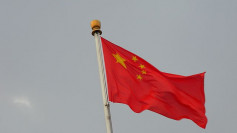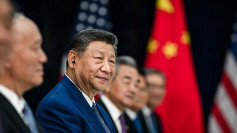June Trade Numbers Surprise On Upside Despite Coronavirus Impact
China's imports in June rose a somewhat surpring 2.7%, confounding market expectations for a 10% drop, while exports also edged up 0.5% year-on-year as overseas economies reopened after lockdowns, according to news reports.
China's total imports and exports in the first half of 2020 topped to RMB1.424 trillion, a drop of 3.2% year-on-year.
Meanwhile, Customs' cross-border e-commerce supervision platform shows that in the first half of 2020, e-commerce exports rose by 28.7% and imports rose by 24.4% year-on-year. The rise in e-commerce exports and imports on the platform was credited to the enhanced cross-border online system bolstering foreign trading even during the COVID-19 pandemic, said Li Guidong, General Administration of Customs spokesperson.
China Customs reformed measures this year to improve cross-border e-commerce trade. Aside from fast-paced process of returning purchase and promoting B2B in customs across 10 cities, it also simplified registration, application and customs transfer for import and export companies.
U.S. President Donald Trump said on Friday he was not thinking about negotiating a "Phase 2" trade deal with China as relations between Washington and Beijing have been "severely damaged" due to the coronavirus pandemic and other issues leading to China's trade surplus growing to US$29.41 billion in June from US$27.89 billion in May.
These worsening U.S.-China relations, shrinking global demand and disruptions in supply chains are also likely to pressure the trade outlook over the long run, according to a recent report by the Institute of Advanced Research at Shanghai University of Finance and Economics.
China's overall trade surplus for June stood at $46.42 billion, compared with a surplus of $62.93 billion in May, Reuters reported.
Central Bank Eyes More Monetary Easing
China will adopt more normal monetary easing in the coming months, now that an economic recovery from the novel coronavirus pandemic is underway, China's central bank said.
The People's Bank of China (PBOC) injected a total of RMB80 billion (US$11.43 billion) into the country's money market through two 7-day reverse repurchase agreements on Monday and Tuesday, both at a rate of 2.20%, in an attempt to stabilize liquidity conditions.
This move came after injections were suspended for 10 consecutive business days after June 28, at an unchanged rate of 2.2%.
A reverse repurchase agreement, or reverse repo, is a transaction in which the central bank sells a security to commercial banks with an agreement to repurchase that same security at a higher price at a specific time in the future. It provides temporary lending opportunities that help to fund ongoing operations.
Economic analysts said that it s the PBOC's standard operating procedure to add monetary stimulus in the middle of the month rather than at the start or end of each month.
As a result of the PBOC's monetary easing measures during the first six months of this year, China's new CNY loans rose to more than RMB12 trillion ($1.71 trillion), accounting for about 60 percent of the annual new CNY loan target of RMB20 trillion (US$2.89 trillion), according to PBOC officials.
Microsoft to Spin Off Xiaoice as Standalone AI Venture
Microsoft will spin off its Xiaoice, or Xiaobing, artificial intelligence initiative as an independent venture, authorizing the new company to use and further developing Xiaoice artificial intelligent technologies.
Microsoft said the new venture was intended to "accelerate the pace of local innovation of the Xiaoice product line" and "promote perfecting the commercial ecosystem around it."
The former head of its AI and Research Division, Dr. Shen Xiangyang, will be the chairman of the company, while Li Di, who leads the Xiaoice team internally at Microsoft, will be the CEO. Chen Zhan will be the general manager of the Japanese division. Microsoft will retain its stakes in the new company.
Microsoft Research Asia (MSRA), Microsoft's research arm in the Asia Pacific region, rolled out the first generation of Xiaoice, an eponymous chatbot, in Beijing in 2014.
The current research and development team is comprised of Microsoft Beijing, Suzhou and Tokyo developers creating an emphatic conversational approach different from personal Interactive Voice Response common in apps like Siri.
Xiaoice, or "Rinna" in Japan, is a teenage girl persona AI with access to up to 660 million online users, a 900 million overall content audience, and 450 million third-party intelligent devices under Xiaoice brand.
It was removed by Tencent's QQ app in 2017 due to concerns about politically sensitive speech.
The spinoff is scheduled to take place in the next few months as the new version of Xiaoice will be launched this August, thepaper.cn reported.
Huawei Reports Revenue Rise
Huawei reported a 13.1% rise in revenue during the first half of the year, while at the same time requesting that the UK delay the Chinese technology giant's removal from 5G network infrastructure.
Huawei said on Monday through its official website that its revenues in the first half of the year totalled RMB454 billion (US$64.90 billion), or a rise of 13.1% year-on-year. Meanwhile, net profit margin rose 9.2%, a slight rise from the same period a year ago.
The growth in revenues was down from 23.2% in the first half of 2019, however, as the U.S. government has pressured Huawei's suppliers and customers, and the company has seen overseas pushback in European markets.
On Sunday, Huawei requested a meeting with British Prime Minister Boris Johnson to work out a deal to delay its potential removal from the country's 5G phone network until after elections in June 2025, the Sunday Times newspaper reported.
Huawei expects that the new government may reverse the decision and the firm will, in return, pledge to maintain its equipment in the UK, which is also used in current 2G, 3G and 4G networks, the report added.
Massive Migration Follows Industrial Shift
Twelve cities in China saw massive migration and population increases over the past 10 years, with growth ranging from 1 million to 3 million people in each city and the biggest change affecting Shenzhen, which rests on the Hong Kong border, according to recent statistics by the China Business Network (CBN).
The population changes were prompted by the country's shift from manufacturing and heavy industries to high-tech and service industries, the CBN said. The 12 cities comprise the southern cities of Shenzhen, Guangzhou and Changsha; the northern cities of Tianjing, Beijing and Zhengzhou; the eastern cities of Hangzhou and Shanghai; and the central cities of Chengdu, Chongqing, Wuhan, and Xi'an.
The statistics reveal that from 2015 to 2019, cities in the southern Pearl River Delta, the eastern Hangzhou Bay and the middle-western regions absorbed the most migrants.
Dongguan, Yantai, Suzhou and Wuxi – cities that were formerly hotspots for manufacturing and foreign trading, have seen less than 300,000 new migrants each over the past ten years. The labor-intensive industries that formerly existed in these cities have largely moved factories to China's middle-western regions and Southeast Asia, said Ding Changfa, Economics Professor at Xiamen University.
Middle-western regions have been absorbing massive migration, with fast-paced urbanization and industry relocations prompting university graduates in those regions to remain for job opportunities, Ding added.
In 2017, Beijing and Shanghai, two megacities of over 20 million residents, implemented population caps, leading to tens of thousands of low-income migrants being forced out of the cities.
Census data indicates that urban areas increased markedly from 36% (0.46 billion) in 2000 to 50% (0.67 billion) in 2010. The rural exodus is expected to continue, with an estimated 0.3 billion additional rural residents migrating to the rapidly expanding urban regions by the time the seventh national census is tallied, which is expected to take place on November 1.






